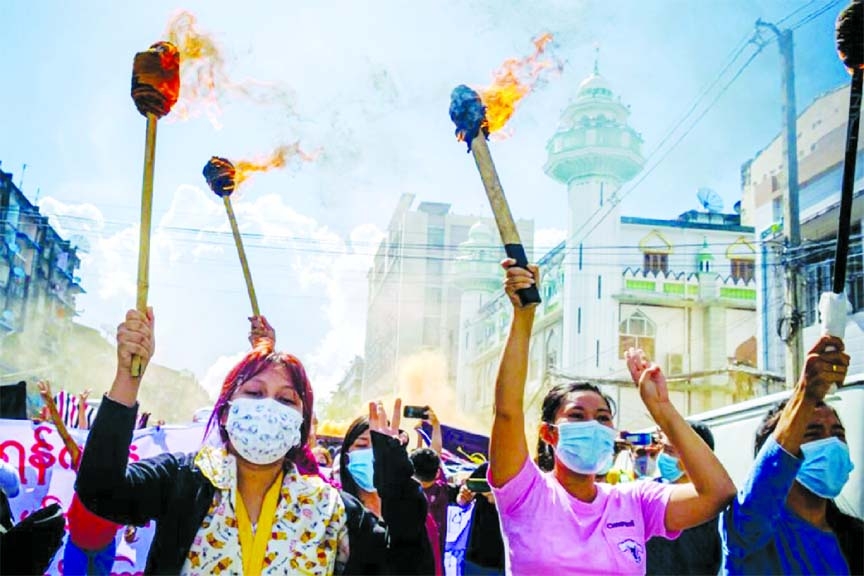
Reuters :
About 100 opponents of military rule in Myanmar marched through the centre of its biggest city of Yangon on Wednesday, as the United States called on Southeast Asian nations to take action to restore democracy and end violence in their neighbour.
Myanmar has been in turmoil since the military overthrew the elected government of Aung San Suu Kyi on February 1, but street protests have become rarer after they were suppressed by the army with the killing hundreds of people.
Raising three-finger salutes as a gesture of defiance, the protesters in Yangon chanted: “We’re not scared of Covid why should we fear the junta?” and “Revolution must prevail.”
Some also carried flaming torches during the rally that was led by women and billed as “Yangon’s 21st Century Queen Panhtwar’s Strike,” in a reference to a legendary queen renowned for her spiritual resilience and ability to defend her kingdom.
During a virtual meeting with members of the Association of Southeast Asian Nations (Asean), US Secretary of State Antony Blinken urged its members to take joint action to help end violence, restore a democratic transition and release those “unjustly detained” in Myanmar, State Department spokesperson Ned Price said.
Blinken also urged Asean, which includes Myanmar, to hold the military accountable on what Asean called a five-point peace consensus, agreed in April, with Myanmar’s military ruler.
The United States, along with other Western countries, has imposed sanctions on the junta, but Asean has been leading diplomatic effort to resolve the crisis in its fellow member. Despite junta leader Min Aung Hlaing’s apparent agreement with the Asean peace plan, the military has shown little sign of following through and has touted its own, different plan to restore order and democracy.
Myanmar’s security forces have killed more than 900 people since the coup and detained thousands, according to the Assistance Association for Political Prisoners, an activist group. The junta has previously disputed the death toll and said the army had also suffered casualties.
After large protests in the days and weeks following the coup were often met by gun fire, some protesters moved to form militias to take on the army with fighting in several regions displacing tens of thousands of people.
The conflict and a civil disobedience campaign, which has included many medical staff, have also hampered efforts to contain a record jump in Covid-19 infections and deaths in Myanmar.

